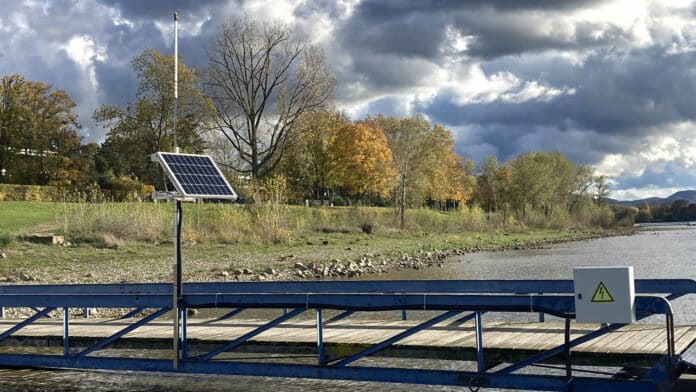There is a wide range of methods to determine the level of a watercourse – from very simple ones to advanced radar solutions. According to scientists at the Germany’s University of Bonn, most measuring devices can be damaged due to direct exposure to the high-water level; many do not allow continuous monitoring, remote reading is difficult, or they are simply too expensive.
Led by Dr. Makan Karegar, the researchers developed an alternative that doesn’t have such problems. The new measuring device is cost-effective, more robust and reliable than others, and capable of continuously transmitting the water level to an evaluation center via mobile communication. This means that such a sensor is suitable for providing a densely distributed network for flood and drought warning systems.
The core of the new water level sensor is a low-cost GNSS receiver and antenna connected to a Raspberry Pi microcomputer. The device continuously receives GPS and GLONASS satellite signals – part of each signal is received directly from the satellite. The rest is reflected from the nearby environment (in this case, the water surface) and reaches the receiver via a detour. This reflected part, therefore, travels longer. When superimposed on the directly received signal, it forms certain patterns called interference. These can be used to calculate the distance between the antenna and the water level. The data is transmitted to authorities via existing mobile networks.
“We can attach the GNSS antenna to any structure, whether it’s a bridge, a building, or a tree or fence next to the river,” Karegar explains. “From there, it can measure the river level around the clock without contact – to within around 1.5 centimeters on average. And yet it is less likely to be damaged during extreme flooding events.”
The accuracy of the method does not match that of a radar-based sensor. However, it is completely sufficient for the intended use, the researchers say. At just under €150 ($156), the device is also considerably cheaper than its advanced counterpart. The water level sensor – can be operated with solar cells and then works completely stand-alone with no maintenance. One of the sensors has already been in use for two years on the Lower Rhine River.
The technology is currently only suitable for rivers with a width of at least 40 meters; otherwise, much of the reflected signal comes from land. The team plans to further optimize their evaluation code, which they hope will enable them to obtain reliable results for smaller rivers such as the Ahr in Germany. Researchers have freely made available the open-source code and the plans for the device via the project website.
Journal reference:
- Makan A. Karegar, Jürgen Kusche, Felipe Geremia-Nievinski, and Kristine M. Larson. Raspberry Pi Reflector (RPR): A Low-cost Water-level Monitoring System based on GNSS Interferometric Reflectometry. Water Resources Research, 2022; DOI: 10.1029/2021WR031713
